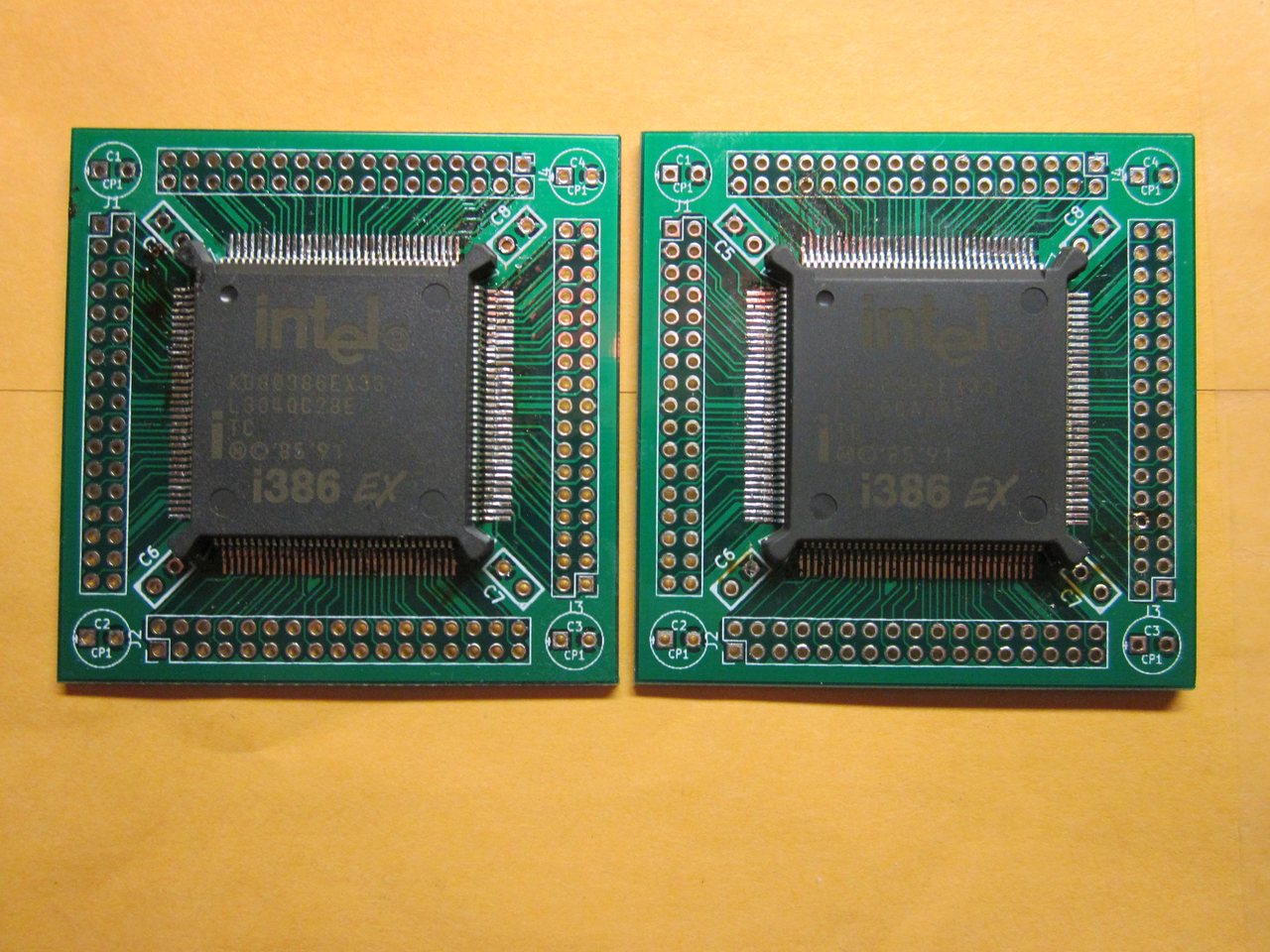This is an old revision of the document!
Table of Contents
SBC-386EX
Disclaimer: this is a work in progress
The Processor
The Intel 80386EX processor is a successor to the 80386SX, a stripped down version of the full 80386. The SX uses a 16-bit bus, and is limited to 16Mb of memory. The EX processor is targeted at Embedded applications and, like the 80186/188, includes many of the most useful peripherals on-board. It is derived from the SX in that it supports a 16-bit bus, but it expands the address space by 2 bits to 64Mb. The on-board peripherals include: 2 interrupt controllers, 2 DMA channels, 2 serial I/O ports, 3 timers, FPU port, a synchronous I/O port, 3 parallel ports, and multiple programmable I/O and chip select pins. Many of these peripherals share chip pins, so a designer has to choose those needed in a particular application.
 User Manual (4.6mb)
User Manual (4.6mb)
The Package: PQFP-132
The “millipede” surface-mount package is a serious deterrent to use in a hobby project. However, a good workaround is an adapter board, as seen below. This is the second version, smaller that the first, measuring 50mm x 50mm. If these can be supplied, a wider range of hobbyists may wish to tackle the final SBC to come out of this project.
Two 50mm X 50mm adapter boards with 80386EX in place. The pin connections are on a 2mm grid and are 2×17 pins each.
The prototype board SBC-386EX-0
This board take several short-cuts: SRAM instead of DRAM, limited peripherals. However, it is a test bed to learn …
- Enabling the slot-15 I/O ports (all of the on-chip goodies); and disabling them, too.
- Programming the I/O and memory chip selects. (critical)
- Using 16-bit and 8-bit mixed ports.
- Accessing & programming the serial I/O port 0 at 0x03F8.
- Getting to the timers. Possible automatic determination of CPU clock speed.
- Using a new access method to get to the DS1302. Three pins on one of the parallel ports should work.
- Enabling & using the 387SX math co-processor.
- Accessing peripherals on the ECB bus; i.e., other RetroBrew boards.
DRAM, synchronous serial I/O (SSIO), and DMA will have to wait for another prototype round.
Here's the board built-up, lacking FPU & crystal for DS1302.
Project Status
2017-Nov-17: A third round of prototype boards have arrived (see above).Theywillusethe adapter boards, and will check out a subset of the circuitry to be used on any final board. There may be additional “prototype” rounds to check out other circuitry, before committing to a fully functional SBC.
–JRCoffman (johninsd at gmail dot com)


